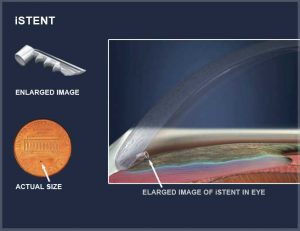Below are some of the Surgical Procedures performed by Jay M. Rubin, M.D.
Cataract surgery
As we age, the lens inside your eye becomes increasing cloudy, affecting one's vision. Symptoms include blurry vision, glare issues and decrease night vision. Theses symptoms can impair driving and cause trouble with reading and watching tv.
Luckily cataract surgery has come a long way. In the 60's and 70's , one was hospitalized for a week without allowing any movement. Then were left with wearing very heavy and thick glasses. In the 70's-80's intraocular lens where being developed allowing for reduction in the thickness of the post op glasses. The 90's and 00's saw development of improved techniques allowing less time for hospitalization. In the early 10's we saw the advent of new intraocular lens that improved visual performance for distance and near work.
Today's cataract surgery is a giant leap from the early 60's, as we now have lasers that assist with cataract surgery and the procedure is an out patient procedure, requiring minimal time away from your everyday routine. The femtosecond laser is assisting cataract surgeons like Dr. Rubin by making precise incisions, and aiding in correcting patients astigmatism. Also new developments in the designs of intraocular lens include the new extended depth of focus lens that allow a larger range of vision options than previous lens.
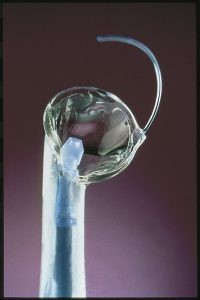
Foldable intraocular lens
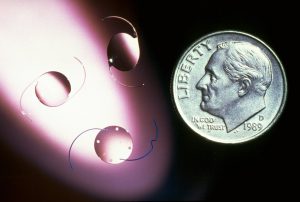
Intraocular lens size vs dime
Refractive surgery
What is Refractive surgery? It is the ability to change your glass prescription with is evaluated by a refraction. Refractive surgery can be accomplished in a number of different ways.
- Surface ablation , ( also know as Photorefractive Keratomomy, PRK) is when a laser is used to sculpt the cornea with a laser. This can be used for patients with myopia, hyperopia, and astigmatism. There are certain requirements needed before proceeding , so several special exams need to be performed in addition to a comprehensive exam before determining if you are a candidate
- Laser assisted in situ keratomileusis ,( also known as Lasik) , is similar to PRK, but a flap is made from the cornea, and the laser sculpts the cornea and the flap is folded back onto the cornea. This also has certain requirements that may be different than prk, requiring a special exam.
- Clear lens extraction is similar to cataract surgery but the lens is not cloudy as it would be in cataract surgery. This type of surgery has a few more inherent risks than the top two.
- Another option not performed by Dr.Rubin is the phakic intra-ocular lens and corneal inlays for presbyopia. Feel free to discuss these options with Dr. Rubin.
Glaucoma
There are mainly two types of glaucoma, open angle that is the most common and is a slow process, and narrow angle which is uncommon but more threatening to vision quickly. Currently the mainstay of glaucoma treatment is eye drops. These medications help to reduce the pressure inside the eye in hopes of diminishing the damage done to the optic nerve thereby preserving vision. When the drops no longer work or the patient no longer desires to use drops then we have the following options.
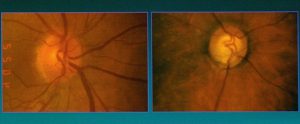
Normal nerve on left and abnormal cupping of nerve on right
Laser treatment for glaucoma
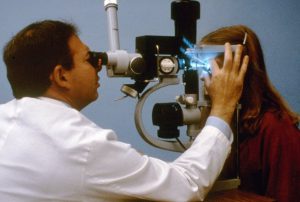
Laser treatment for glaucoma
Open angle Glaucoma- A laser is used to treat the drainage system allowing for the increase flow of fluid thereby decreasing the pressure. This procedure is called a trabeculoplasty. Usually this treatment may need to be repeated , and this must be discussed with Dr. Rubin.
Narrow angle Glaucoma - Is more uncommon but can be an ocular emergency as vision may be lost in 24 hours if left untreated. This because the fluid in eye has no where to go and pressure builds up rapidly. A laser is used to make an escape channel through the iris.
I Stents for glaucoma having cataract surgery
Recent developments have shown that i stents may improving outflow in patients with mild to moderate glaucoma and is approved only for patients having cataract surgery. Ask Dr. Rubin more about the istent if you are having cataract surgery .
